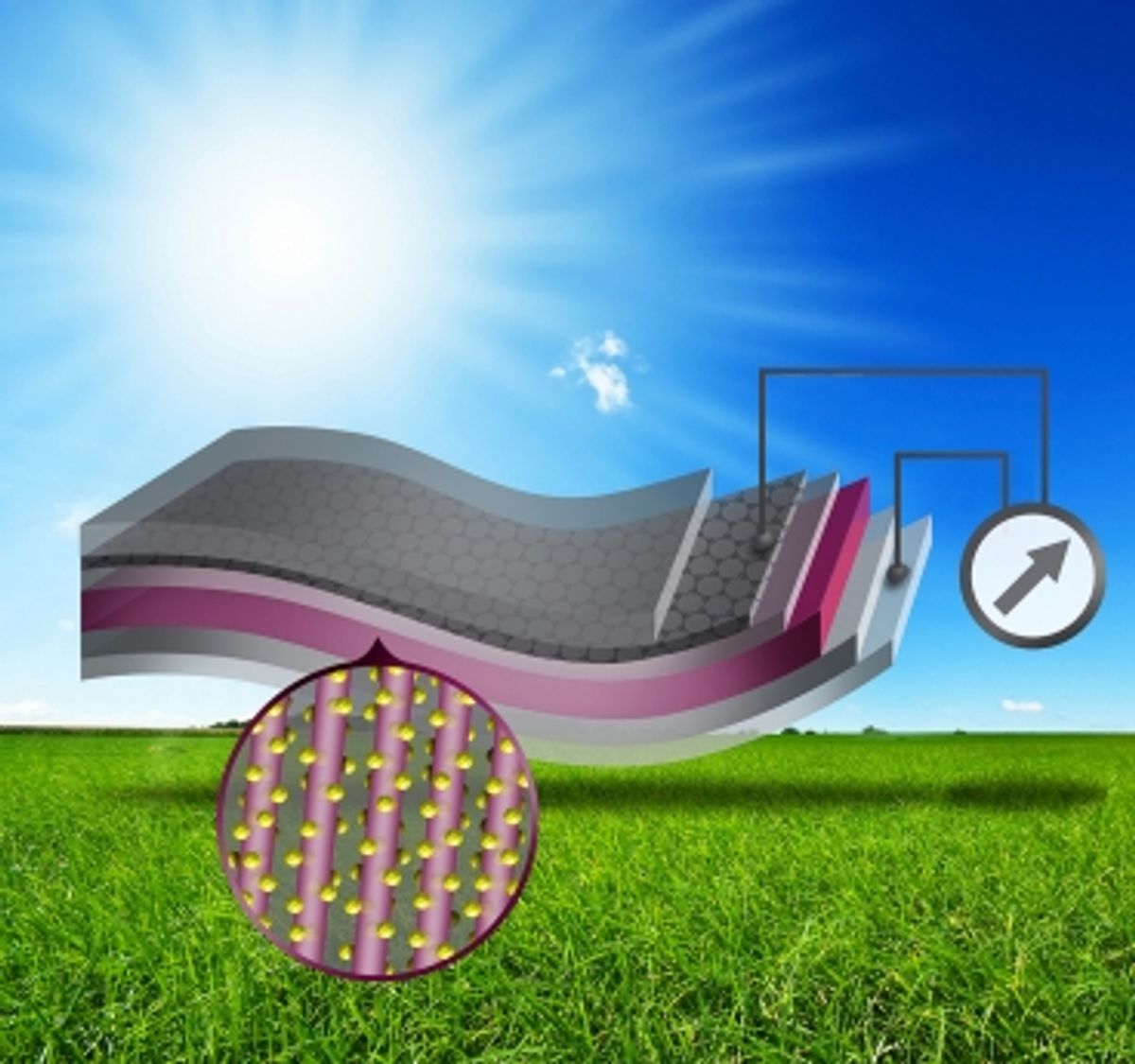Almost two years ago, researchers at MIT were heralding graphene as a possible replacement for the expensive indium-tin-oxide used in electrodes for organic solar cells. They showed a way in which the entire solar cell could be flexible—including its electrodes—and transparent.
Not long after that, research at Rice University picked up on the use of graphene for replacing ITO, but aimed their work towards creating a thin film for touch-screen displays.
While this latest research is not the first time graphene was used a replacement for ITO—even at MIT—it does have the distinction of being a graphene-nanowire solar cell with a respectable energy conversion efficiency of 4.2 percent. While this may not sound like a world-beating number, it stands up well to that of ITO-based devices with similar architectures.
“We’ve demonstrated that devices based on graphene have a comparable efficiency to ITO,” says Silvija Gradečak, one of the MIT researchers involved in the project, in a press release. “We’re the first to demonstrate graphene-nanowire solar cells without sacrificing device performance.”
The key to performing at a higher level than has been achieved by other designs was a series of polymer coatings that modified the properties of the graphene. This allowed the researchers first to bond a layer of zinc oxide nanowires to the graphene and then quantum dots that respond to light.
The prototypes developed by the MIT team remain fairly small in scale—a little over a centimeter (perhaps explaining why the Rice team felt satisfied with applying their graphene-nanowire ITO replacement to touch screens of mobile devices). But the researchers feel confident that the process they have for making the material is highly scalable.
“The size is not a limiting factor, and graphene can be transferred onto various target substrates such as glass or plastic,” says Hyesung Park, a co-author of the paper, in the release.
While Gradečak expresses a bit more caution, she does seem to think that the material could reach commercial devices in a couple of years. Yes, well, if there were efficient mechanisms for bringing research from the lab to the fab, she might be right. But until then, we may just have to wait a bit longer than that.
Illustration: Courtesy of the research team
Dexter Johnson is a contributing editor at IEEE Spectrum, with a focus on nanotechnology.




